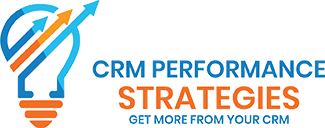
Building a CRM business case
There are many elements of a customer strategy, I have focused on the following four that best pertain to CRM systems:
- Why consider a CRM investment?
- Common CRM benefits
- CRM costs and operating requirements.
- Investment return considerations

Why consider a CRM investment?
If your business has clients, transactions and revenue, then you need something to keep track of this important information. Prior to CRM, businesses mostly relied on paper files and someone who could search for information and answer questions. Today, these benefits provide a core capability that can be extended with many powerful features.

Core Benefits
The core features of a CRM system should include the following. The benefits that these features support include security, data reliability, and consistency of basic reporting:
- Maintaining a client database and transaction history
- Providing logon and data security
- Providing a consistent process for data entry
- Basic reporting.
The minimal viable CRM
Mobile can reduce CRM expense by accessing data directly and optimizing CRM seat costs to jobs that need broad access to data. Mobile also drives CRM adoption and satisfaction since the user interface is convenient and efficient – especially for field sales and service workers.This combination of features represents our minimal viable CRM system. This system provides core benefits and with mobile results in the lowest cost configuration based on the net present costs of a CRM system. We consider this alternative an operating necessity and establishes our economic base by which more feature rich options will be judged.
Data entry automation and reporting
This CRM alternative includes all minimal viable (MV CRM) features plus
- Automated entry of leads
- Automated entry of sales transactions
- Business Intelligence and data modeling
- Automated reporting – KPI, financial, and operating data.
This option is a good fit when transaction counts are high and are available from a common data source that can be connected through these system’s API (application programming interface). Also, be aware that CRM vendors charges for API usage can vary widely. Automated reporting tools such as Microsoft’s business intelligence (Bi) applications provide an interface with many information sources, automates the review and cleansing of data and provides custom business reporting. There are many good business intelligence packages available on the market today.
Optimization
This is the most complex and expensive feature we consider. It also has the highest potential for game-changing results. But only in the right hands.
- Traditional methods: Pareto and Linear regression.
- Many CRM systems now include Ai machine learning as an option.
If you have experienced data scientists and operations analysts that can provide support in this area, then you might be very happy with the results. These systems can also be very expensive.
Bundling
Several popular CRM systems provide add-ins or options for data automation, reporting and optimization. By including these in your CRM system, the integration of data will be simplified. The downside is that these plugins are rarely the “best-in-class “solution. There are third party applications that provide high quality data integration services as a reasonable cost. We recommend that you compare the costs and features of CRM plug-in apps carefully.
Investment Return Considerations
This graph summarizes the net present costs for each alternative on the horizontal axis (my estimate for a fifty-person company with 40 field salespeople) and the break-even annual equivalent savings on the vertical axis. What this means is the lowest cost alternative is the MV CRM with mobile apps installed for the field sales team.
All alternatives are compared with that new MV CRM. For example, the automated data entry option would need $12k in annual savings (versus the MV CRM), the full Bi reporting option would require $29k in savings and the Ai would require $125k in savings (I have added consulting help for the BI and Ai options).

CRM costs and operating requirements
We now turn our attention to address a couple of ongoing cost considerations. First, nearly all CRM systems require a system administrator to maintain system user access, keep user information up to date, and maintain system configuration options. This is not a job that can be handled by low level admin. Secondly there is a cost for ongoing system development that should be included in your project plan for CRM, Third, the ongoing seat costs, with options as selected, will drive the bulk of your projects overall cost commitment. Pay close attention to this number. Fourth, we have initial and ongoing training, and finally, be sure to include API, network and internet charges.
Summary
In summary, I believe that CRM investments should be considered versus a minimum value CRM option. This allows each additional feature to be judged on the merits of the benefits that it provides. Mobile also proved to be an important feature in keeping the ongoing costs of CRM manageable.
We offer a free 30 minutes strategy session to find out how much your business can save,
click the link below to schedule:
